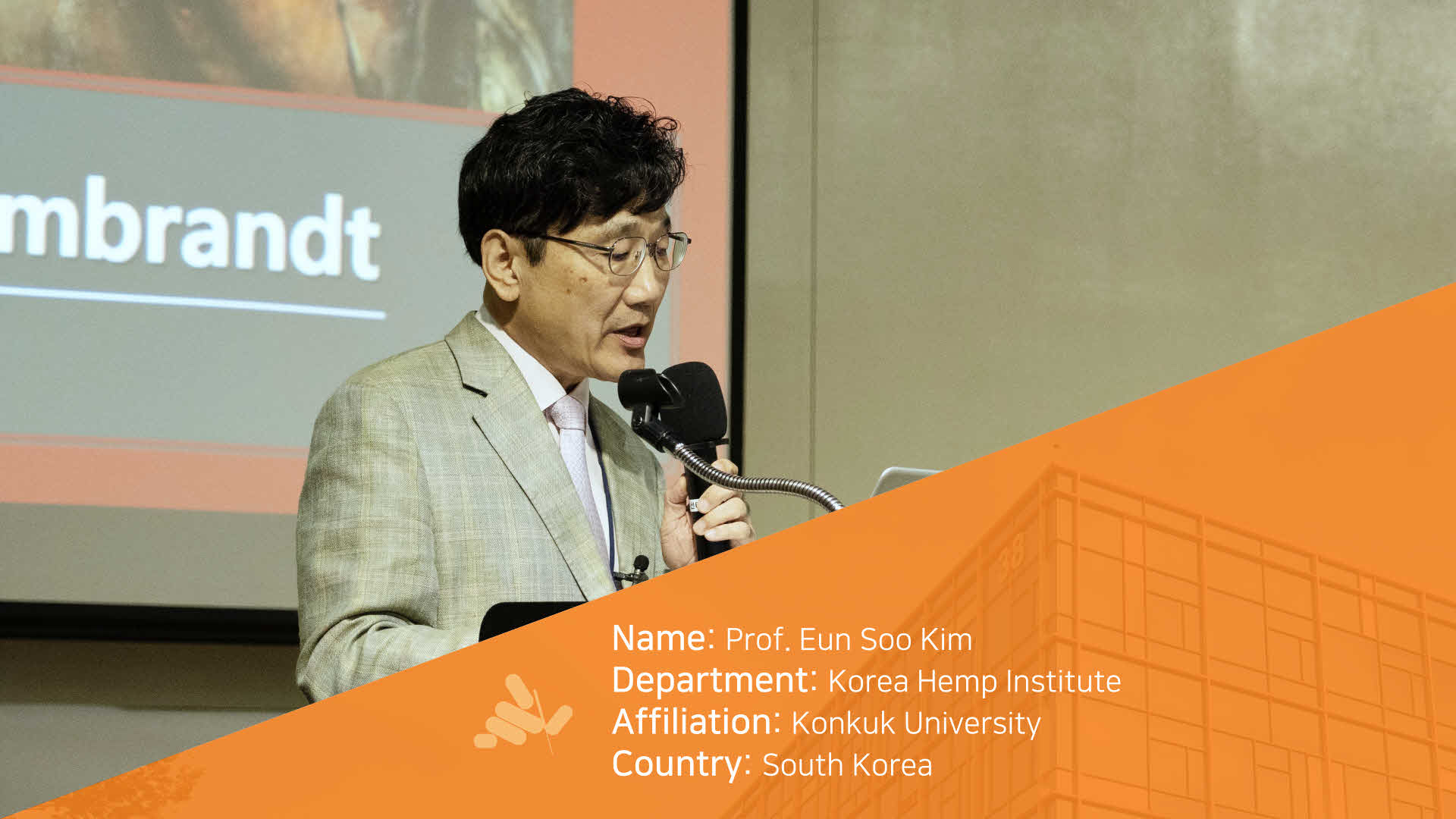온라인강의

강의소개
Title:
Cannabinoid synthesis and accumulation in glandular trichomes of Cannabis
sativa
Keywords: Cannabis,
cannabinoid, glandular trichome, lipoplast, secretory cavity, terpene
Abstract:
Glandular
trichomes are known to be the sites of cannabinoid accumulation in Cannabis
sativa. They cover the surface of the aboveground plant parts but are most
abundant on the floral bracts of pistillate plants. This study conducted to
determine where the cannabinoids are synthesized and localized at the
whole-plant level and at the cellular level using micromanipulation and
transmission electron microscopy.
According to
their external features, three types of glandular trichomes are recognized:
bulbous, capitate-sessile, and capitate-stalked trichomes. The gland head
consist of disc cells containing cytoplasm and a non-cellular intrawall
secretory cavity. The lipoplasts in the disc cells of globose heads synthesize
lipophilic terpenes that migrate through the plasma membrane and into the cell
wall adjacent to the secretory cavity. They subsequently pass through the cell
wall and accumulate in the secretory cavity in the form of secretory vesicles. Numerous
vesicles of different sizes and densities are localized in the secretory
cavity.
In conclusion,
lipophilic terpenes and phenols, when released from their respective lipoplasts
and vacuole compartments, accumulate in the plasma membrane/cell wall interface,
where enzymes combine these precursors into cannabinoids. Mature glands possess
the highest concentration of major cannabinoids, such as CBD in the fiber
strains and THC in the drug strains of Cannabis sativa.
강사소개
Dr. Kim received his bachelor’s degree in
horticultural science from the Korea University, and his M.S and Ph.D. in Plant
Morphology at the Biology Department at Korea University. He has a long history
with Cannabis research, which includes his postdoctoral work with Dr. Paul
Mahlberg at the Biology Department at Indiana University. This was one of the
very few Cannabis research projects in the US, which already began in the
1970s. During his work with Dr. Mahlberg, Dr. Kim investigated mechanisms of
cannabinoid production. He is an expert in medicinal plant research including
Panax and Cannabis. He has established the first research institute of hemp in
Korea, Korea Hemp Institute, with thirty faculty members of ten universities.
As the director and the principal researcher, Dr. Kim has been leading many
domestic and international research projects with industrial hemp during the
past thirty years. Dr. Kim has created the College of Bioscience and
Bioengineering at Konkuk University, and he has served as the first dean of
that college. He also showed his leadership through the academic activities of
Botanical Society of Korea, and Korean Society of Microscopy as the vice
president of both societies.